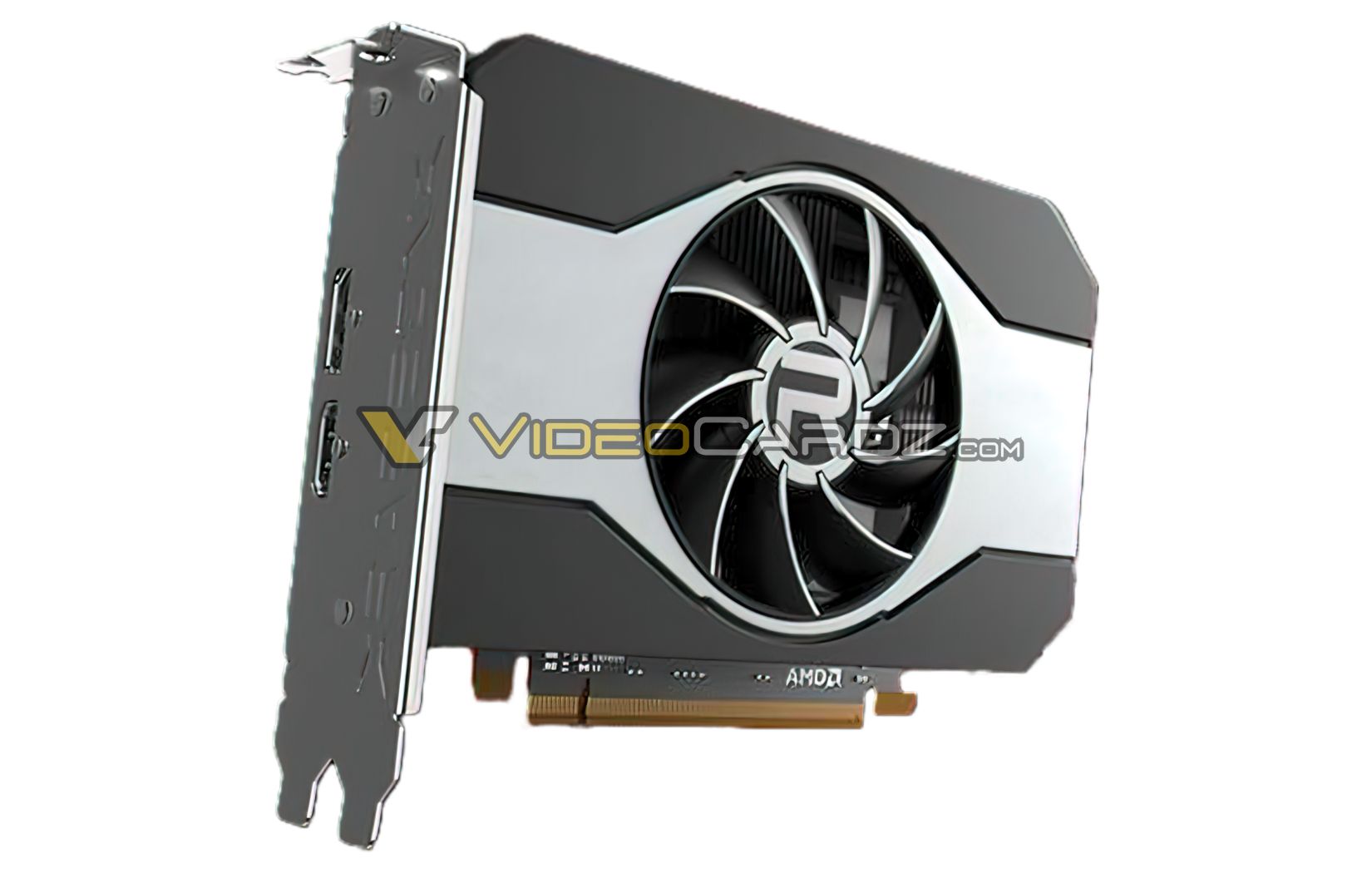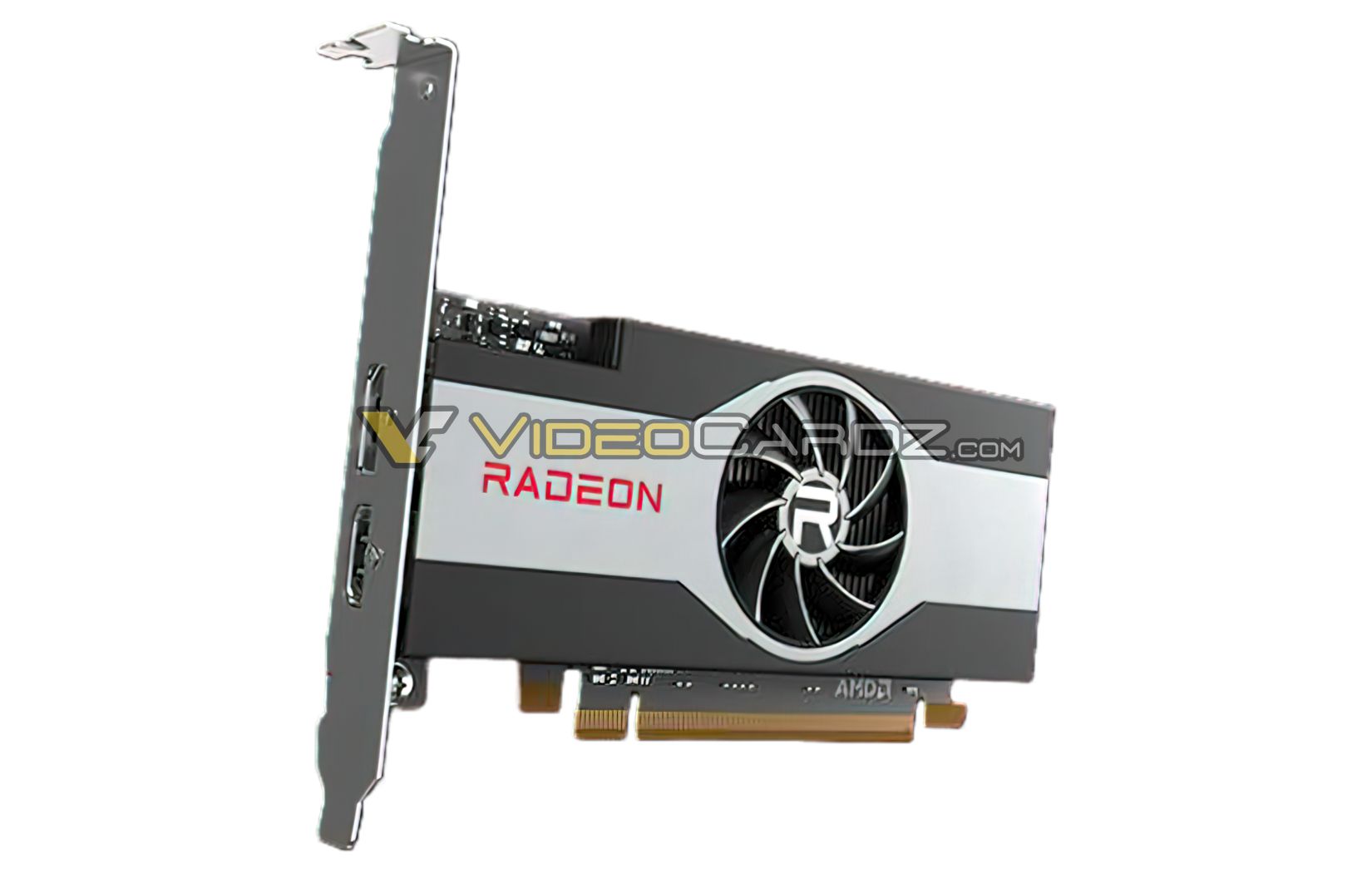Radeon RX 6500 XT, RX 6400 GPU Renders Reportedly Surface
Navi 24 is rumored to power the RX 6400 and RX 6500 XT
As reported by Videocardz, we have our first look at the alleged renders of AMD's upcoming new Navi 24 die. According to rumors, this new die will reportedly power the forthcoming Radeon RX 6500 XT and the entry-level Radeon RX 6400. Barring any surprises, Navi 24 should be the last die to come out of AMD's RDNA2 product stack.
The die presumably measures in at just 141mm², making it the smallest Navi die from AMD in quite a while. However, specs-wise, the Navi 24 may only come with just 16 CUs for a total of 1,024 cores along with 16MB of infinity cache and a tiny 64-bit memory bus.
For reference, AMD's Navi 23 die, which currently feeds the mid-range Radeon RX 6600 and Radeon RX 6600 XT, is substantially larger at 236 mm² and features double the amount of CUs, along with 4x the amount of Infinity Cache and a 128-bit memory bus. So we can expect any GPU equipped with the Navi 24 die to be at least 2x slower than a Radeon RX 6600 XT, if not more so due to the considerable reduction in Infinity Cache size. However, performance as such should be perfectly adequate for the entry-level market.


For now, the only products we know about that could feature the Navi 24 dies are the Radeon RX 6500 XT and Radeon RX 6400. According to another report from Videocardz, rumored specs for the Radeon RX 6500 XT appear to be 1,024 cores, 4GB of 16 Gbps GDDR6 memory across a 64-bit bus, and a 107W power limit.
Specs for the Radeon RX 6400 are slightly reduced from the Radeon 6500 XT, featuring just 768 cores and 4GB of 14 Gbps GDDR6 memory. However, the rumored power consumption of this card is just 53W, just half that of the Radeon RX 6500 XT. If true, we can expect the RX 6400 to be housed in both very low-end systems and very compact systems as well.
We may learn more about Navi 24 at CES 2022. However, only the Radeon RX 6400 XT is available to the retail market, whereas the Radeon RX 6400 is an OEM card.
Get Tom's Hardware's best news and in-depth reviews, straight to your inbox.

Aaron Klotz is a contributing writer for Tom’s Hardware, covering news related to computer hardware such as CPUs, and graphics cards.
-
Alvar "Miles" Udell The only GPU you will be able to buy in 2022 will let you game at 1280x720!Reply -
watzupken I seriously feel that AMD need to rethink about the mid/low end cards in their lineup. They are seriously messed up with the low memory bus. At the top end, you get a full fat 128/ 96 MB cache that may mitigate some of the bandwidth issue, but not at the lower end.Reply
In 2019, low end cards come with 128bit memory bus, and in 2022, they cut it to 64 bit with a meagre 16MB cache. These cards are not meant for high resolution gaming, I get it. But still, it is very limiting in my opinion, and will absolutely kills performance. Worst of all, AMD is limiting overclocking, which means you can't get away from the memory bandwidth shortage by trying to push the memory harder. -
Alvar "Miles" Udell The bigger problem is the price structure. It wasn't too long ago that the top end AMD video card (Vega 64) was $500 and the mainstream performer (RX 580) was $250.Reply
Fast forward to the current generation and the current "mainstream" 6700XT MSRPs at the same price as the former high end, and now $250 barely will get you an entry level card at MSRP. Now you're talking even lower end cards which I wouldn't want to think about running any game newer than 2018 which will likely sell for $175-$200, that should be unacceptable to everyone. -
mitch074 Reply
Price and demand - those same $250 cards from 2018 were already selling for that price in 2016 (RX480 8Gb) and are still pretty much the same price at the eve of 2022... The RX6500 XT will probably have the same performance as the RX580@1080p, so it will sell at the same price... It's been a nasty few years for GPUs now. Also, remember what's the low end at Nvidia's : the GT1030. You can't even play with it.Alvar Miles Udell said:The bigger problem is the price structure. It wasn't too long ago that the top end AMD video card (Vega 64) was $500 and the mainstream performer (RX 580) was $250.
Fast forward to the current generation and the current "mainstream" 6700XT MSRPs at the same price as the former high end, and now $250 barely will get you an entry level card at MSRP. Now you're talking even lower end cards which I wouldn't want to think about running any game newer than 2018 which will likely sell for $175-$200, that should be unacceptable to everyone. -
hotaru.hino Reply
The cost of the transistor hasn't really gone down over the years and the cost to push to smaller nodes is getting worse.Alvar Miles Udell said:The bigger problem is the price structure. It wasn't too long ago that the top end AMD video card (Vega 64) was $500 and the mainstream performer (RX 580) was $250.
Fast forward to the current generation and the current "mainstream" 6700XT MSRPs at the same price as the former high end, and now $250 barely will get you an entry level card at MSRP. Now you're talking even lower end cards which I wouldn't want to think about running any game newer than 2018 which will likely sell for $175-$200, that should be unacceptable to everyone.
That cost has to go somewhere. -
InvalidError Reply
The cost of transistor does go down, except companies are throwing billions of extra transistors at larger faster caches to better decouple CPU/GPU cores from memory latency and bandwidth bottlenecks, so overall cost still goes up.hotaru.hino said:The cost of the transistor hasn't really gone down over the years and the cost to push to smaller nodes is getting worse.
That cost has to go somewhere.